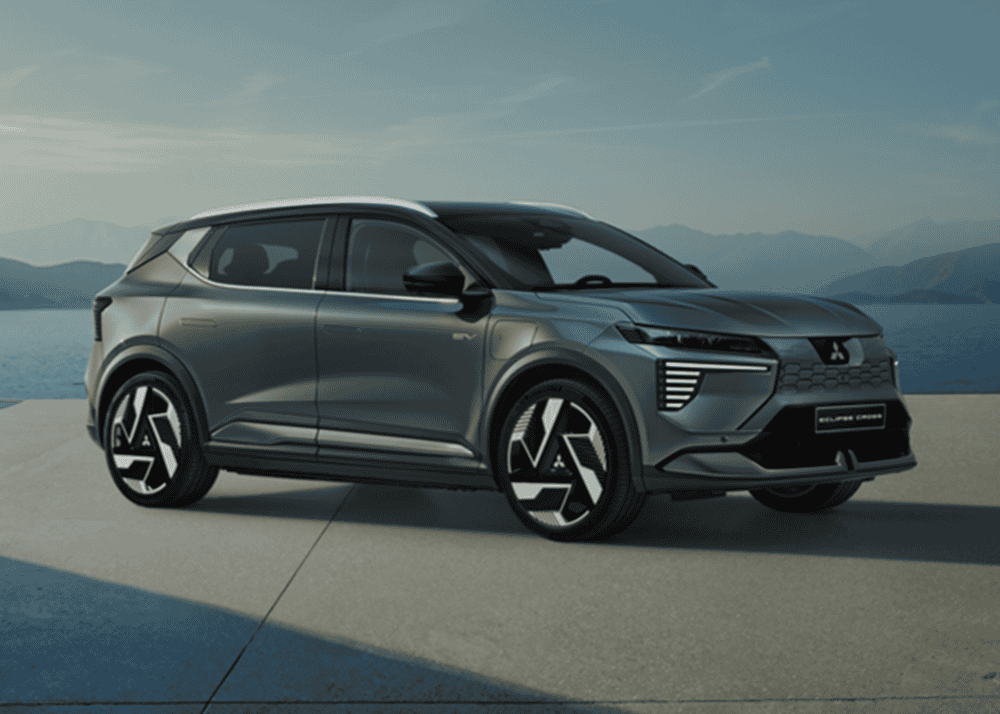
Having revived the Grandis after 14 years two months ago, Mitsubishi has unveiled its Renault-based product in the shape of the all-new Eclipse Cross.
Replacing the previous coupe-styled model that controversy reintroduced the Eclipse name in 2017 as an SUV instead of the much loved sports coupe, the second generation goes a step further by not only using the foundation of its alliance partner, but also dropped the combustion engine in favour of an all-electric setup.
Essentially Mitsubishi’s take on the Megane E-Tech, the officially titled Eclipse Cross Electric also becomes a more traditional crossover with the same dimensions as its sibling, and usage of the CMF-EV platform.
Officially the fourth Renault-underpinned Mitsubishi model after the Grandis, Colt (Clio) and ASX (Captur), the Eclipse Cross’ main difference is a completely restyled front facia that incorporates element from the Xforce/Outlander Sport, as well as the long gone North American Endeavour.
Called Smart Armour the brand says is meant to be an evolution of its Dynamic Shield styling language, the redesign a split light arrangement, a new lower airdam, a Mitsubishi specific sealed grille panel, new bumper and bonnet, and Mitsubishi bespoke alloy wheels up to 20-inches.
More subtle are the changes at the rear where the J-shaped light clusters from the Xforce/Outlander Sport have been applied, connected by a black strip replete with the Mitsubishi logo.
Chrome detailing around the windows, a new rear bumper and Mitsubishi badges in place of the Renault items round the exterior off.
Inside, and bar the Mitsubishi insignia on the steering wheel, the Eclipse Cross Electric’s cabin is unchanged from the Megane E-Tech, thus retaining the portrait-style 12.3-inch infotainment system, the digital instrument cluster of the same size and the panoramic sunroof that becomes opaque or transparent instead of having a sunblind.
Unique to the Eclipse Cross though is a Harman Kardon sound system not offered on the Megane E-Tech.
The full suite of safety and driver assistance systems includes front and rear parking sensors, a surround-view camera, MI PILOT semi-autonomous driving, Adaptive Cruise Control, Rear Cross Traffic Alert, Lane Keep Assist, Driver Attention Alert, Forward Collision Braking, Lane Departure Warning, Reverse Automatic Braking and Safe Exit Alert.
Providing the propulsion, the Eclipse Cross uses the bigger of the two battery packs offered in the Megane E-Tech, the 87-kWh module that powers a single electric motor on the front axle.
Producing 160kW/300Nm, the claimed range is 600 km and, as with the Renault, enough for a top speed of 170 km/h and 0-100 km/h in 8.4 seconds.
Although fitted with a 22 kW charger as standard, the Eclipse Cross supports DC charging up to 150 kW.
On-sale before the end of the year in Europe, with production taking place alongside the Megane E-Tech at the ElectriCity Douai Plant in France, the Eclipse Cross is not expected to be added to Mitsubishi South Africa’s product portfolio anytime soon.



